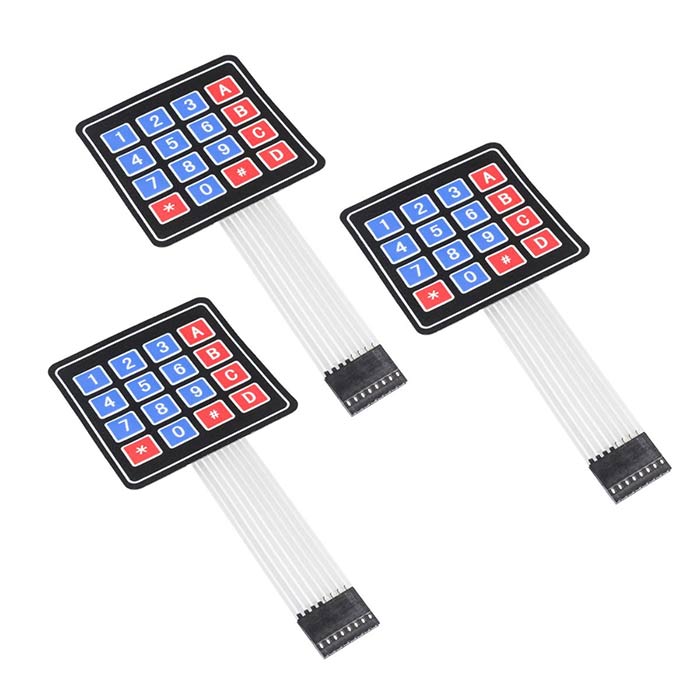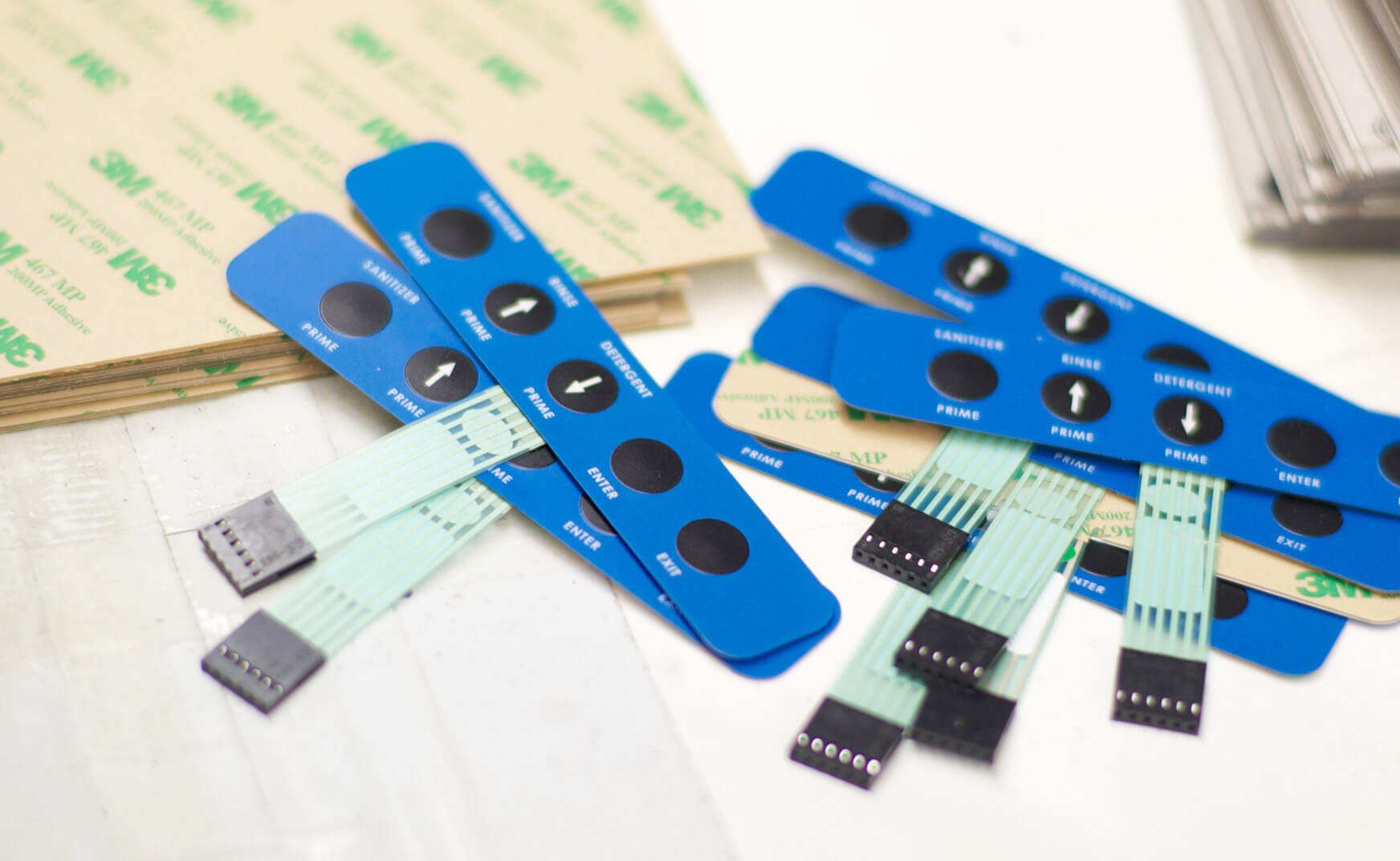All About Membrane Layer Change: Comprehending Its Design and Functionality
When you believe about the control interfaces in contemporary devices, membrane layer switches commonly come to mind. Let's discover what collections membrane switches apart from other control systems.
What Are Membrane Switches?

Their seamless nature makes them very easy to clean and resistant to dirt and dampness, a crucial function in several settings. Membrane switches can also be customized pertaining to shape, dimension, and graphics, allowing suppliers to produce distinct interfaces customized to certain products. And also, they're lightweight and slim, which assists in reducing the general mass of gadgets. On the whole, membrane layer buttons play a substantial role in enhancing individual experience throughout a wide array of applications.
Exactly How Membrane Layer Switches Over Job
When you press a key on a membrane layer button, it activates an uncomplicated yet effective system. The leading layer, commonly made from flexible material, lowers onto a conductive layer below it. This action bridges the space between conductive traces, completing an electrical circuit. As quickly as the circuit shuts, it sends out a signal to the tool's controller, which analyzes your input.
You'll discover that the responsive responses varies based upon the button design, using either a soft click or a much more noticable reaction. As soon as you release the trick, the membrane returns to its original position, resuming the circuit and quiting the signal. This procedure takes place almost instantaneously, making sure a responsive customer experience.
Membrane layer buttons are popular because of their sturdiness and resistance to dust and moisture, making them ideal for different applications, from house devices to medical tools. Understanding this procedure assists you value their extensive use.
Secret Elements of Membrane Layer Buttons
Recognizing the essential components of membrane layer switches is basic for understanding their capability and layout. The safety layer guards against ecological factors and wear, prolonging the switch's life expectancy. By understanding these parts, you'll acquire understanding right into just how membrane switches over run and their importance in different applications.
Products Utilized in Membrane Layer Change Layout
The efficiency and longevity of membrane switches over heavily depend on the products used in their style. You generally experience polyester and polycarbonate as key substratums because of their excellent stamina and adaptability. These materials withstand scrapes and chemicals, making them perfect for requiring atmospheres.
The conductive layers frequently utilize silver or carbon, selected for their dependability and conductivity. membrane switch manufacturer. Silver gives premium efficiency, while carbon is a cost-effective choice. For the overlay, you may take into consideration a matte or shiny coating, depending upon your aesthetic needs and customer experience
Make specific to select adhesives that withstand ecological aspects like temperature level and moisture. Choosing the ideal products will guarantee your membrane switch stands the examination of time.
Design Factors To Consider for Membrane Switches
While creating membrane layer buttons, it's important to take into account numerous variables that influence their functionality and user experience. Beginning by focusing on the layout and switch size; make certain they're instinctive and very easy to navigate.
Verify your style suits ecological elements, like wetness or temperature variations, which could influence efficiency. By meticulously thinking about these components, you'll produce a membrane layer switch that improves functionality and fulfillment.
Applications of Membrane Switches
Membrane layer buttons are flexible components located in different applications, from commercial equipment to customer electronics. You'll see their impact in makers that need long lasting interfaces and in gadgets that benefit from sleek layouts. Comprehending these applications helps you value the capability and functionality of membrane switches in everyday technology.
Industrial Devices Use
When you're aiming to improve the capability of industrial equipment, membrane layer switches use a reputable remedy that combines toughness with easy to use layout. These switches are ideal for rough atmospheres, giving resistance to dirt, dampness, and chemicals. You'll discover them in control panels for making devices, a/c systems, and medical devices, where precision and responsiveness are vital. Their low profile suggests they fit flawlessly into various equipment, conserving important room while preserving ease of use. With adjustable graphics and backlighting alternatives, you can develop an intuitive user interface for drivers, boosting performance and security. And also, their long life expectancy reduces maintenance costs, making them a smart financial Homepage investment for your industrial applications. Accept membrane layer buttons to simplify your procedures and enhance total performance.
Consumer Electronic Devices Combination
In the domain name of consumer electronic devices, membrane layer switches play an important duty in boosting user interaction and gadget performance. Membrane layer buttons also ensure sturdiness and resistance to dirt and wetness, extending the life expectancy of your electronics. By choosing membrane layer buttons, you improve not simply the performance however likewise the style of your devices, making day-to-day interactions smooth and satisfying.
Advantages and Downsides of Membrane Layer Buttons
While membrane switches use a series of benefits, they additionally feature some downsides that you should take into consideration. One significant advantage is their small style, making them perfect for space-constrained applications. They're likewise affordable, offering a resilient solution with a low production cost. On top of that, their smooth surface is easy to clean, improving health in environments like medical facilities.

Membrane switches can have a Source much shorter life-span contrasted to mechanical buttons, specifically under heavy usage. They can additionally be less tactile, which could impact user responses during procedure. Stabilizing these pros and disadvantages will aid you identify if membrane switches are the right fit for your project.
Frequently Asked Inquiries
How Much Time Do Membrane Changes Typically Last?
Membrane changes commonly last in between 5 to ten years, depending upon use and ecological conditions. You'll intend to examine elements like wear, exposure to moisture, and temperature fluctuations to evaluate their durability effectively.
Can Membrane Layer Switches Be Custom-made for Particular Styles?
Yes, you can personalize membrane layer buttons to fit specific layouts (membrane switch manufacturer). You'll have the freedom to pick shades, forms, and formats that match your project's needs, guaranteeing they blend flawlessly with your total aesthetic
What Is the Price Range for Membrane Layer Change Production?
The cost variety for membrane layer button production typically drops between $1 and $10 each, relying on elements like style intricacy, amount, and materials. You can get quotes from producers to discover the very best alternative.

Are Membrane Switches Over Waterproof or Immune?
Membrane switches can be created to be water-proof or resistant, depending on materials utilized and building and construction techniques. If you YOURURL.com need them for damp atmospheres, assure you specify those demands during the design process.
Just How Do Membrane Switches Compare to Standard Switches?
Membrane layer switches are typically thinner and more adaptable than typical buttons, using a streamlined design. They're usually much easier to clean and integrate, yet might not provide the tactile comments you're utilized to with mechanical options.
Conclusion
